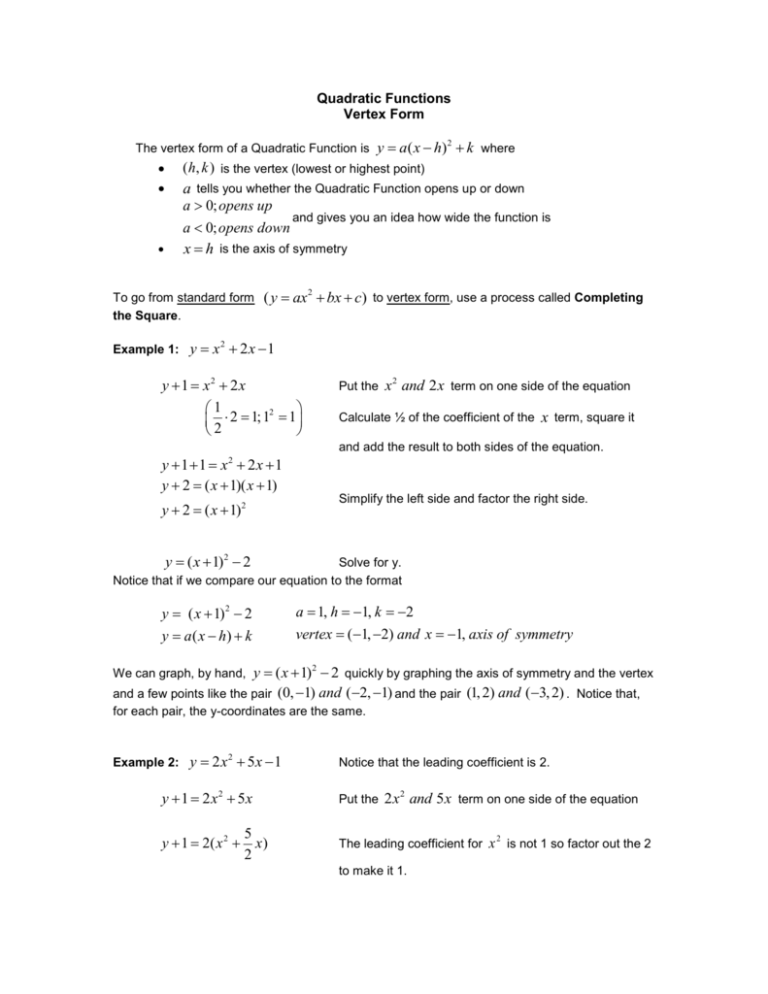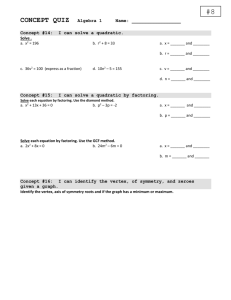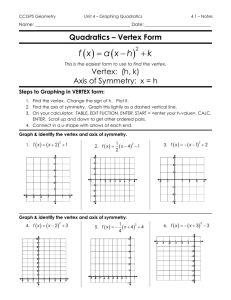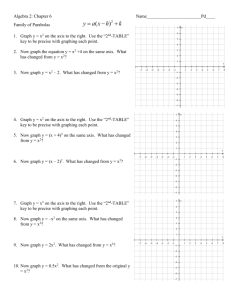Math 112 Notes - De Anza College
advertisement

Quadratic Functions Vertex Form The vertex form of a Quadratic Function is y a( x h)2 k where ( h, k ) is the vertex (lowest or highest point) a tells you whether the Quadratic Function opens up or down a 0; opens up and gives you an idea how wide the function is a 0; opens down x h is the axis of symmetry To go from standard form the Square. Example 1: ( y ax 2 bx c) to vertex form, use a process called Completing y x2 2x 1 y 1 x2 2x 1 2 2 1;1 1 2 Put the x 2 and 2 x term on one side of the equation Calculate ½ of the coefficient of the x term, square it and add the result to both sides of the equation. y 11 x 2x 1 y 2 ( x 1)( x 1) 2 y 2 ( x 1) 2 Simplify the left side and factor the right side. y ( x 1)2 2 Solve for y. Notice that if we compare our equation to the format y ( x 1) 2 2 y a ( x h) k a 1, h 1, k 2 vertex (1, 2) and x 1, axis of symmetry y ( x 1)2 2 quickly by graphing the axis of symmetry and the vertex and a few points like the pair (0, 1) and ( 2, 1) and the pair (1, 2) and ( 3, 2) . Notice that, We can graph, by hand, for each pair, the y-coordinates are the same. Example 2: y 2 x2 5x 1 y 1 2 x2 5x y 1 2( x 2 5 x) 2 Notice that the leading coefficient is 2. Put the 2 x 2 and 5x term on one side of the equation 2 The leading coefficient for x is not 1 so factor out the 2 to make it 1. 1 5 5 5 2 25 ; 2 2 4 4 16 Calculate ½ of the coefficient of the x term, 25 to both sides of the 16 25 equation. Notice that the term is inside the 16 square it and add 2 parentheses on the right side. 25 5 25 2( x 2 x ) 16 2 16 5 5 2( x )( x ) 4 4 5 2( x ) 2 4 y 1 2 66 16 66 y 16 y 5 66 y 2( x ) 2 4 16 Simplify the left side and factor the right side. Solve for y. Notice that if we compare our equation to the format 5 66 y 2( x ) 2 4 16 y a ( x h) k 5 66 a 2, h , k 4 16 5 5 66 vertex , and x , axis of symmetry 4 4 16











